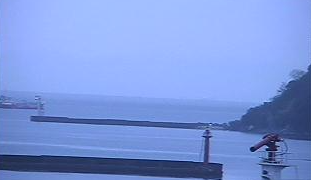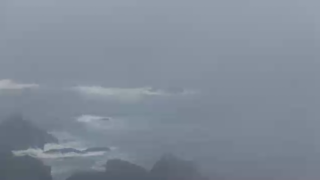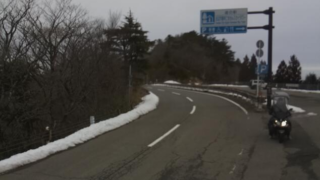Wakayama Prefecture Live Cameras
Wakayama Prefecture Northern part (Wakayama)
Wakayama City | Kainan City | Hashimoto City | Arida City | Gobo City | Kinokawa City | Iwade City | Kimino Town | Katsuragi Town | Kudoyama Town | Koya Town | Yuasa Town | Hirogawa Town | Aridagawa Town | Mihama Town | Hidaka Town | Yura Town | Inami Town | Minabe Town | Hidakagawa Town
Wakayama Prefecture Southern part (Shiomisaki)
Tanabe City | Shingu City | Shirahama Town | Kamitonda Town | Susami Town | Nachikatsuura Town | Taiji Town | Kozagawa Town | Kitayama Village | Kushimoto Town
All over the prefecture
- National Route 42 / National Route 42 Live Camera (Minabe Town South Road, Minabe Town Hikita, Tanabe City Hoyo, Susami Town Kuchiwabuka, Susami Town Wafukagawa, Kushimoto Town Princess, Kushimoto Town West) / Kinan River National Highway Office
- National Route 42, camera title: National Route 42 Live Camera, address: Ministry of Land, Infrastructure and Transport Kinki Regional Development Bureau Kinan River National Highway Office, 142 Nakamaro, Tanabe-shi, Wakayama-ken 646-0003, site title: Ministry of Land, Infrastructure and Transport Kinki Regional Development Bureau Kinan River National Highway Office
Wakayama Prefecture Tourism Information
The prefectural capital is Wakayama City. The prefectural population is about one million people and the population of Wakayama City is about 370,000 people. Many forest enough to be called a country of wood and 80% of the prefectural land is mountainous.
Agriculture is a thriving, and tangerine, plum, Hassaku, Jabara (Citrus Jabara), persimmon and pepper are first or second position of the value of shipments in the nation.
“Jabara (Citrus Jabara)” is the fruit of citrus that is the same of Yuzu (citron) and Cabos (Citrus sphaerocarpa), and Kitayama is famous locality. It is said that it was named “Jabara” from the meaning of “drive away evil spirits (“Jaki” means evil spirits and “bara” means drive away in Japanese)”.
There are local cuisines such as “Mehari-zushi (Mehari Sushi)”, rice balls wrapped in salted leaves of mustard, “Kujira no Tatsutaage (fried whale)”, fried whale fillets that were immersed in such soy sauce and ginger oil and coated with potato starch.
There are “Wakayama Castle” , “Wakaura”, “Koyasan” and “Kumano three mountains” as tourism resources in the prefecture. “Wakayama Castle” is the castle Toyotomi Hideyoshi gave in 1585 to his younger brother Toyotomi Hidenaga at the time of Kishu conquest, and after the Battle of Sekigahara it had been ruled by Asano Yoshinaga, but the tenth child of Tokugawa Ieyasu, Tokugawa Yorinobu, entered the castle in 1619, and it became Tokugawa Gosanke (the three branch families of the Tokugawa house) and the birth of the Kishu Tokugawa clan. The Tokugawa Shogunate Eighth Shogun as famous ruler of virtue, Tokugawa Yoshimune, was the original fifth feudal lord of Kishu Tokugawa clan, and became the Shogun after he was adopted and became one of the Edo Tokugawa house.
“Koyasan” of Koya-cho in Ito-gun is the sacred place of training that Kukai opened in 819 AD. It is the major religious temple city in which, including the Kongōbu-ji temple, there are more than 100 temples and altitude 1000m class mountains, and it is the Holy Land of Japanese Buddhism, along with Hieizan (Mount Hiei). In 2004, Pilgrimage Routes of Koyasan were added to our catalog on UNESCO world cultural heritage as “Sacred Sites and Pilgrimage Routes in the Kii Mountain Range”.
“Kumano Sanzan (Kumano Three Mountains)” that are registered as a part of the cultural heritage refer to Kumano Hongu Taisha, Kumano Hayatama Taisha and Kumano Nachi Shrine. , Retired Emperor Shirakawa, Retired Emperor Toba, Retired Emperor Goshirakawa at the time , and Retired Emperor Gotoba in the Kamakura period made repeated pilgrimages to Kumano Sanzan, which was also taken up in NHK Taiga Drama “Taira no Kiyomori” as “Kumano Moude (Pilgrimage)”. Kumano developed as a sacred place of faith, but it went to decline gradually under the influence of religion policy in the Edo era and the Meiji era and of Shinto and Buddhism isolation measures.
There are rich tourism resources along the coast such as “Shionomisaki”, which was chosen to one of the hundred election of Japan sunsets, a national natural monument “Hashigui-iwa (Hashigui Rock)”, “Kushimoto Marine Park”, which was registered in the Ramsar Convention, in the southernmost Honshu town, Kushimoto-cho.
“Sandanheki” of Shirahama-cho in Nishimuro-gun is the cliff that extends to the length 2km and the height 50m in southwest coast of Kii Peninsula, and it has attracted tourists as scenic spots of Nanki Shirahama. Superb view from the observatory of Sandanheki is the best, but it is possible to go by elevator to Sandanheki-Dokutsu Cave in the basement 36m, and you can see up close the waves surging into the cave.



